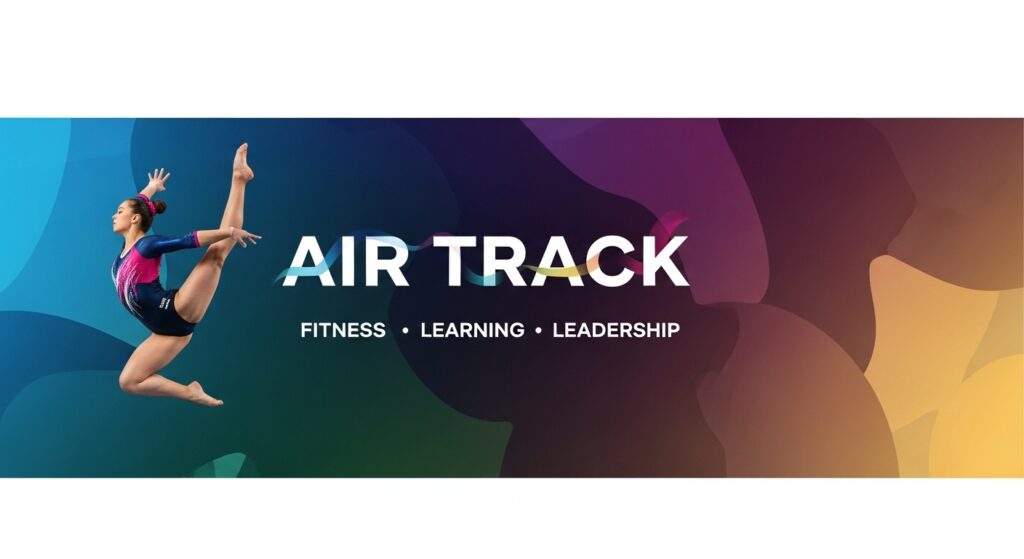In today’s rapidly evolving fitness and recreation world, success is no longer measured solely by medals, gym memberships, or competitive accolades. The most influential innovators are those who bridge physical excellence with accessibility and community benefit—helping people thrive while uplifting their confidence and skills. One such emerging trend is the air track, a versatile inflatable mat changing how athletes, coaches, and families approach training.
This article explores the air track’s rise, its role in reshaping how people learn and train, and why it represents the new generation of fitness tools redefining success.
What Is an Air Track?
An air track is an inflatable tumbling mat designed for gymnastics, cheerleading, martial arts, parkour, and general fitness. It offers a cushioned yet firm surface, mimicking the bounce of a traditional gym floor but with greater portability and injury protection.
While originally popular in professional training centers, air tracks have become mainstream for at-home practice and school sports. This democratization mirrors a larger shift: just as modern leadership emphasizes inclusivity and adaptability, today’s fitness tools emphasize safety, accessibility, and versatility.
A Training Philosophy Rooted in Purpose
At the heart of the air track’s success is a commitment to purposeful training. This philosophy echoes three key principles:
-
Empathy for learners: Understanding that beginners and advanced athletes alike need safe, confidence-building environments.
-
Sustainability: Durable, inflatable construction that can be reused across different venues with minimal environmental impact compared to disposable mats.
-
Collaboration: Families, coaches, and schools can share the same mat across multiple disciplines, amplifying both skill development and community engagement.
This approach reflects the growing recognition that fitness isn’t only about performance—it’s about nurturing people at every stage of their journey.
Bridging Skill Development with Safety
What makes the air track especially noteworthy is its ability to merge skill advancement with injury prevention. Examples include:
-
Gymnastics & Cheerleading: Providing extra bounce for flips and tumbling while cushioning landings.
-
Martial Arts & Parkour: Offering a forgiving surface for rolls, jumps, and aerial moves.
-
Children’s Fitness: Creating a playful yet secure environment for motor skills development.
By embedding these values into the design, the air track illustrates how sports equipment can create a virtuous cycle of success—where safe learning encourages more practice, which in turn sustains motivation and skill growth.
Influence in the Digital Age
As a rising trend, the air track has benefited from social media and digital platforms. Parents, athletes, and coaches now share videos of new drills, creative uses, and safety tips. This online visibility does more than advertise a product—it cultivates a movement around skill-building and confidence.
This savvy use of digital media enables brands and individuals to:
-
Reach broader audiences with instructional content.
-
Engage younger generations who value authenticity and user-generated recommendations.
-
Inspire others to bring physical education into homes, small gyms, and community centers.
Much like leadership thought-leadership campaigns, this digital ecosystem amplifies the air track’s benefits beyond traditional marketing.
A Model for the Next Generation of Fitness Leaders
The rise of the air track reflects broader shifts in sports and education expectations, particularly among younger athletes and parents. They increasingly look for tools that embody:
-
Authenticity: Equipment that does what it promises—safety and performance in one package.
-
Diversity & Inclusion: Accessibility for different body types, age groups, and skill levels.
-
Global awareness: Portable equipment that can be used in diverse settings, from urban gyms to rural schools.
By championing these principles, coaches and educators position themselves as both trailblazers and mentors, guiding young athletes toward a future where skill-building naturally aligns with safety and enjoyment.
Challenges and Opportunities
Like any innovation, the air track faces challenges:
-
Space requirements: Inflatable mats can take up significant room in smaller homes.
-
Maintenance: Proper inflation, deflation, and storage are key to longevity.
-
Perceived cost: Some may see it as an investment compared to cheaper foam mats.
Yet these challenges also present opportunities for innovation. As manufacturers develop foldable, modular, or multi-use air tracks, more people will be able to integrate them into their daily routines. Coaches can create shared equipment pools, and schools can use sponsorships to make air tracks widely available.
Looking Ahead: Beyond the Air Track
The air track’s influence goes beyond gymnastics—it represents a philosophy of accessible, high-quality tools that empower people to grow. We’re seeing parallels in other areas of fitness and recreation:
-
Digital coaching apps making personal training affordable and scalable.
-
Portable fitness equipment like resistance bands, mini trampolines, or adjustable dumbbells creating home-based ecosystems.
-
Hybrid learning models where online instruction meets physical tools like air tracks for real-world practice.
As these trends converge, the air track becomes a symbol of how purposeful design and inclusivity reshape entire fields.
Why the Air Track Resonates with Modern Values
In many ways, the air track exemplifies the same qualities admired in contemporary leadership:
-
Resilience: Its inflatable structure bounces back, literally and figuratively.
-
Empathy: Reducing injury risk for learners.
-
Community: Serving multiple people across activities, not just a single purpose.
These shared qualities explain why the air track’s adoption rate continues to grow. People want tools and leaders that help them stretch, experiment, and land safely.
Tips for Maximizing Your Air Track
For anyone considering bringing an air track into their routine, here are practical steps to get the most out of it:
-
Choose the right size: Measure your available space and consider your training goals.
-
Invest in a good pump: Quick inflation/deflation saves time and ensures consistent firmness.
-
Use proper footwear or go barefoot: This maximizes grip and prolongs mat life.
-
Integrate with other equipment: Combine with balance beams, small hurdles, or resistance bands for varied workouts.
-
Store safely: Keep it clean and dry, and roll loosely to avoid creases or punctures.
With these tips, you can turn your air track into a long-term partner in fitness and skill-building.
Conclusion
The air track isn’t just a training tool; it’s a microcosm of how modern innovation meets tradition. By blending safety, versatility, and portability, it reflects a broader societal shift toward accessible excellence—whether in athletics, education, or leadership.
In a world where consumers, parents, and athletes increasingly demand accountability, inclusivity, and value, the air track sets a new standard. It shows that with the right support, anyone can build skills, confidence, and community from the ground up—sometimes literally bouncing higher than they thought possible.






